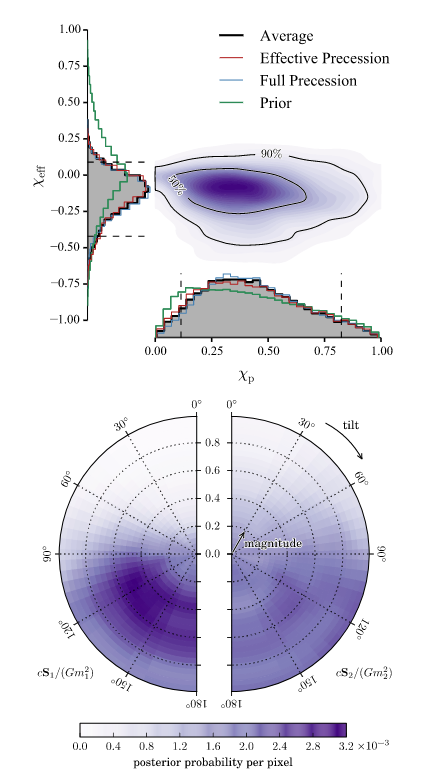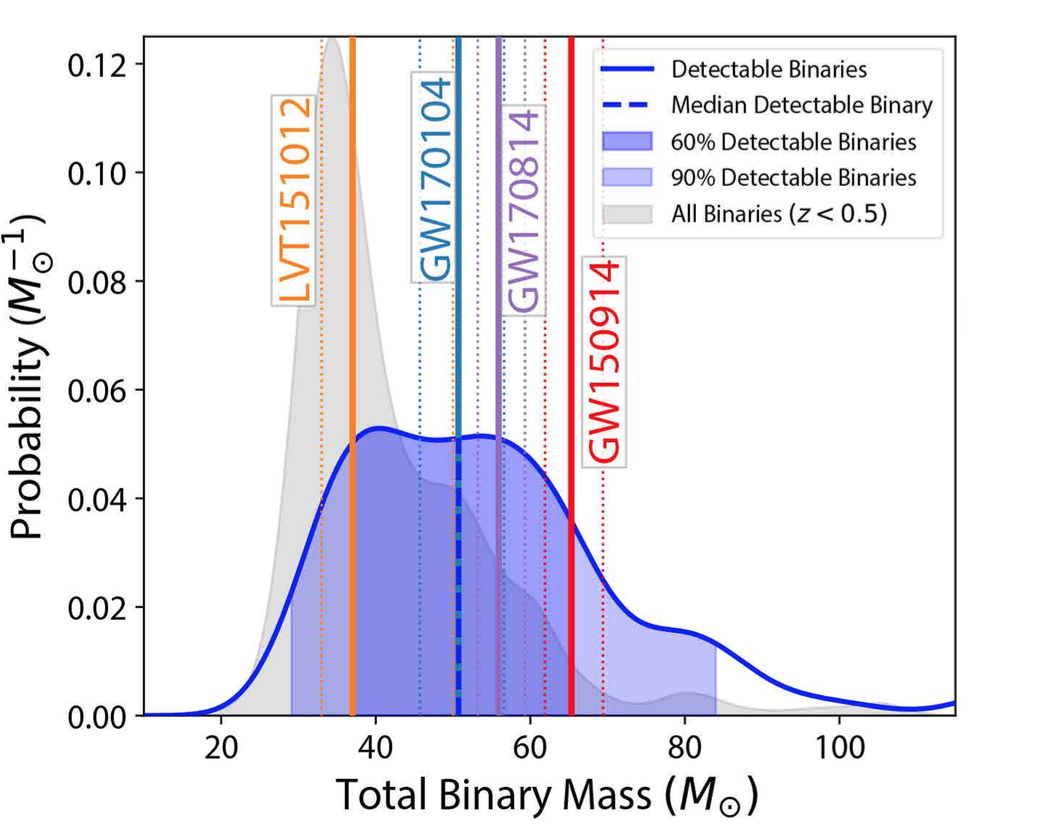It’s been an interesting few years since the first detection of gravitational waves. We’ve gone from a single, initial binary black hole mergers (GW150914), to 6 detentions (5 binary black holes and 1 binary neutron star merger). As you an imagine, this has been pretty damned exciting.
But we still haven’t settled exactly where these systems are coming from. The two main channels for forming compact binaries–isolated evolution from stellar binaries (aka the field) and dynamical formation in dense star clusters–can seem to produce all of the events we’ve seen so far. Despite our best efforts, we can’t seem to find a system that clearly shows the history of where it came from.
I started looking at this problem at the beginning of my fellowship at MIT. Since it’s going to be a few years before we have catalogues of compact-object mergers, the easiest thing to do for now will be to look for systems that could only have come from one channel or the other. The easiest idea, which people have had for years, is that the orientation of the black hole spins might be a good way to discriminate the two channels:

If you assume that black holes forming from isolated binaries should start off spinning in the same direction as their orbit (i.e. S and L parallel, in the image above), then you would expect most binaries from the field to have spins aligned with their orbit. On the other hand, since dynamically-formed binaries would have their spins aligned at random, you wouldn’t expect to see too many merging black hole binaries with S and L parallel. Instead, you would expect the spins to precess about the the total angular momentum (J, above) of the system. This precession actually causes amplitude modulations in the gravitational waves detectable by LIGO, as the binary points towards and away from Earth:
[wpvideo 2rt0qoXs]What’s really interesting is that, because most black holes from stellar binaries probably start off with their spins aligned, it should be (nearly) impossible for the spins to become anti-aligned with their orbit. This is important because what LIGO measures best isn’t the orientation of the spins in 3D space, it’s the projection of those spins onto the orbital angular momentum, aka the effective spin, or chi effective (the green arrow in the above diagram).
This was the claim I made: that if LIGO manages to detect a binary whose spins are anti-aligned with its orbit, then that binary was probably formed in a cluster. This won’t be true for every binary black hole formed in a cluster, of course. But since the spins are essentially isotropic in the dynamical formation scenario, then basic statistics tells us that roughly half of cluster systems should have their spins anti-aligned with the orbit.
I published the above paper in mid-November 2016. A few months later, LIGO detected it’s second heavy black hole binary, GW170104. Amazingly, it seemed to have evidence of having its spins anti-aligned with the orbit!

Now this doesn’t definitively show that this system came from a cluster. Looking at the posterior on chi effective above, it’s also entirely possible that the black holes had no spins at all. But the balance of probability (82%) is that the spins alignments were negative, suggestive of dynamical formation. Now nobody would claim that 82% is definitive of anything, but it certainly is suggestive. That, coupled with the fact that the masses of GW170104 happen to lie right at the median for detectable binary black holes from globular clusters

at least hints to me that we’re on the right track (I even got interviewed by Science, where I basically said the same thing). I think we’ll need to few more detections before we can say anything definitive, but fortunately LIGO’s next observing run, O3, is less than a year away.